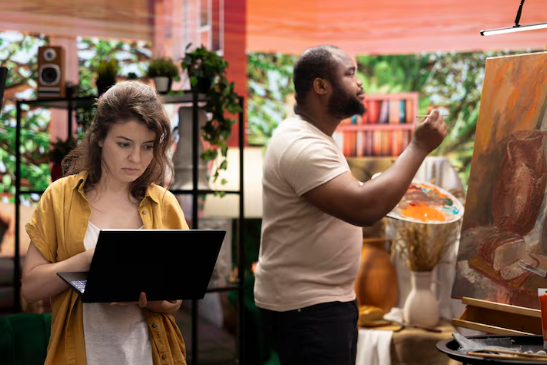Organic Boxed Wine in Eco-Friendly Packaging

The Growing Appeal Of Organic Boxed Wine
It feels like everywhere you look these days, people are talking about sustainability. And the wine world is no different. We’re seeing a big shift away from the old ways, especially when it comes to how wine gets to our glasses. For a long time, wine meant heavy glass bottles, but that’s changing fast. Consumers are looking for options that are kinder to the planet, and that’s where organic boxed wine really starts to shine.
A Shift Toward Sustainability In Wine
The wine industry has been pretty traditional, with glass bottles being the standard for ages. But let’s be real, making and shipping those bottles takes a lot of energy and creates a decent amount of pollution. Think about the kilns needed to make glass and then all the fuel burned to get those heavy bottles to stores. It adds up. Now, more and more wineries are realizing this and looking for better ways. They’re moving towards packaging that’s lighter and uses materials that are easier on the environment. It’s a move that makes sense for the planet and for businesses wanting to appeal to a more eco-aware customer base.
Why Consumers Are Choosing Boxed Alternatives
So, why are people actually picking up boxes of wine instead of bottles? Well, it’s not just about being green, though that’s a big part of it. Boxed wine has come a long way from its earlier reputation. The packaging itself is designed to keep the wine fresh for much longer after you open it – we’re talking weeks, not just days. Plus, you get more wine for your money, which is always a nice bonus. And let’s not forget how easy they are to take places. Picnics, camping trips, or just a backyard barbecue – a box is way less likely to break than a glass bottle and much easier to carry.
The Evolution Of Boxed Wine Quality
Honestly, the idea of boxed wine used to make me think of something cheap and maybe not so great tasting. But that image is totally outdated now. The quality of wine available in boxes has seriously improved. Wineries are putting good juice into these packages, and the technology used in the boxes actually helps preserve the wine’s flavor and aroma. It means you can get a really enjoyable bottle of wine, like some of the organic options from places like Alileo Wines, without worrying about it going bad after you open it. It’s proof that you don’t need a fancy glass bottle to have a quality wine experience.
Understanding The Eco-Friendly Advantages
When you pick up a box of wine, you’re often making a choice that’s better for the planet than grabbing a traditional glass bottle. It’s not just about convenience; there are some real environmental wins happening here.
Reduced Carbon Footprint Compared To Glass
Think about how much energy it takes to make glass. It’s a lot. Then you have to ship those heavy bottles, which uses even more fuel. Boxed wine packaging is significantly lighter. This means less energy is used to produce the packaging and less fuel is burned to get it to your local store. Studies show that boxed wine can have up to an 84% lower carbon footprint than wine in glass bottles. This difference comes from the materials used and the efficiency in transportation.
Here’s a quick look at why:
- Lighter Materials: The paperboard and inner bag use fewer resources and less energy to create than glass.
- Efficient Transport: Because boxes are lighter and more compact, more wine can be shipped in a single truck, cutting down on emissions per liter.
- Less Energy Intensive: The manufacturing process for the box is less demanding on energy resources.
Minimizing Waste Through Recyclable Materials
Glass bottles are recyclable, sure, but the reality is that a lot of them don’t actually get recycled. They can end up in landfills, where they stick around for a very, very long time. Boxed wine, on the other hand, is designed with recyclability in mind. The outer carton is typically made from paperboard that’s easy to recycle, and the inner bag can often be recycled too, depending on local facilities. This means less material ends up in the trash.
- Higher Recycling Rates: Paperboard is widely accepted in recycling programs.
- Less Landfill Burden: Boxed wine generates significantly less waste that ends up in landfills compared to glass bottles.
- Reduced Material Use: The overall amount of material needed for a box is less than for a comparable glass bottle.
The shift to boxed wine packaging is a practical step towards reducing the environmental impact of wine consumption. It addresses key areas like energy use, material waste, and transportation emissions, making it a more responsible choice for consumers and the industry alike.
Supporting A Circular Economy With Every Box
What does a circular economy even mean? Basically, it’s about keeping materials in use and reducing waste as much as possible. Boxed wine fits right into this idea. By using materials that are often made from recycled content and are themselves recyclable, the packaging helps keep resources circulating. Instead of a glass bottle being used once and then potentially ending up in a landfill, the components of a wine box can be processed and turned into new products. This approach helps close the loop on waste and promotes a more sustainable system for everyone.
Innovations In Sustainable Wine Packaging
It’s pretty cool how much the wine industry is changing, especially when it comes to packaging. Gone are the days when you only had heavy glass bottles. Now, there are some really smart ideas popping up to make wine packaging better for the planet. Think about it – less waste, less energy used, and wine that stays good for longer. It’s a win-win, really.
Advanced Oxygen-Barrier Technology For Freshness
One of the biggest headaches with wine, especially after you open it, is oxidation. Oxygen is the enemy of fresh wine. Traditional bottles, even with a cork, let a little bit of air in over time. But the bags inside those wine boxes? They’re designed with special liners that act like a shield. This barrier technology is a game-changer because it keeps air out, meaning your wine stays tasting great for way longer – we’re talking weeks, not just a couple of days. This means less wine gets poured down the drain, which is good for your wallet and the environment.
Smart Spout Designs For Convenience
Beyond just keeping the wine fresh, the spouts on these boxes are pretty clever too. They’re designed to let you pour easily without letting a lot of air back into the bag. It’s a simple thing, but it really helps maintain that freshness we just talked about. Plus, it means you don’t need any extra gadgets to try and keep your wine from going bad. It’s all built right in, making it super convenient for everyday enjoyment or when you’re out and about.
Exploring Compostable And Biodegradable Options
The really exciting stuff is what’s coming next. Companies are looking into materials that can actually break down after you’re done with them. We’re talking about packaging that could be compostable or even biodegradable. Imagine a wine box that, after you’ve enjoyed the last drop, can go back into the earth without leaving a mess. While these options are still developing and might not be everywhere yet, it shows a real commitment to finding solutions that go beyond just recycling. It’s about creating a packaging system that’s kinder to the planet from start to finish. Some brands, like Alileo Wines, are actively exploring these kinds of forward-thinking packaging solutions.
Key Features Of Eco-Conscious Wine Packaging
When you’re looking at wine in a box, it’s not just about convenience or price. The packaging itself is designed with the planet in mind. These boxes are a smart choice for anyone trying to be a bit more green with their purchases. They’re built using materials that are better for the environment than traditional glass bottles, and that’s a pretty big deal.
FSC-Certified Paperboard For Responsible Sourcing
The outer part of the box, the part you see and hold, is usually made from paperboard that has an FSC certification. This means the paper comes from forests that are managed responsibly. It’s a way to make sure that trees are being replanted and that the forests are being looked after for the future. It helps stop deforestation and makes sure we’re not just cutting down trees without thinking about it. Brands like Alileo Wines often use this kind of paperboard, showing they care about where their materials come from.
BPA-Free Liners For Wine Preservation
Inside the box, there’s a bag that holds the wine. This bag is made from materials that are free of BPA, which is a chemical that can sometimes be found in plastics. Using BPA-free materials is important for keeping the wine safe to drink and for preserving its taste. This inner bag also does a great job of keeping oxygen out, which helps the wine stay fresh for much longer after you open it. You can often keep a box of wine for up to a month, and it will still taste good.
Low-Impact Printing With Soy-Based Inks
Even the printing on the outside of the box is considered. Many companies are now using soy-based inks instead of the usual petroleum-based ones. Soy inks are better for the environment because they break down more easily and don’t create as much pollution. They also tend to use less energy to produce. So, when you see colorful designs on a wine box, you can be pretty sure it’s being printed in a way that’s kinder to the earth.
Consumer Benefits Beyond Sustainability
Sure, we all want to do our part for the planet, and choosing organic boxed wine is a great way to do that. But honestly, the benefits don’t stop there. This packaging style actually makes life a little easier and your wallet a little happier, too.
Extended Freshness and Reduced Spoilage
This is a big one. Remember that half-finished bottle of wine sitting in the fridge, slowly turning into something you wouldn’t want to drink? Boxed wine pretty much solves that problem. The bag-in-box system is designed to keep air out, which is the main culprit behind wine going bad. So, that 1.5-liter box you opened? It’ll likely stay tasting good for up to a month. That means less wasted wine and more opportunities to enjoy it at your own pace. No more rushing to finish a bottle before it’s too late!
Enhanced Value and Affordability
Let’s talk numbers. When you buy wine in a box, you’re often getting more wine for your money. The packaging itself is less expensive to produce and transport than glass bottles. Wineries, like Alileo Wines, can pass those savings on to you. So, you get a good amount of quality wine without breaking the bank. It’s a smart choice for everyday drinking or when you’re hosting a crowd and don’t want to spend a fortune.
Portability For Any Occasion
Think about it: no more lugging heavy glass bottles around. Boxed wine is lightweight and much less likely to break. This makes it perfect for all sorts of outings. Heading to a picnic? Camping trip? A friend’s barbecue? Just grab a box. It’s easy to carry, easy to store in a cooler, and much less of a worry if it gets knocked around a bit. It just simplifies things when you’re on the go.
Recognitions And Certifications In Green Packaging
It’s great that so many wine brands are thinking about the planet these days. You see a lot of talk about sustainability, but how do you actually know if a brand is serious about it? That’s where certifications and recognitions come in. They’re like a stamp of approval, showing that a company is really putting in the effort to be eco-friendly wine packaging.
Understanding Eco-Certifications For Wine
When you’re looking at wine packaging, especially the boxed kind, keep an eye out for a few key certifications. These aren’t just fancy labels; they mean something. For instance, the Forest Stewardship Council (FSC) certification is a big one. It means the paperboard used for the box comes from forests managed in a way that protects wildlife, respects local communities, and makes sure the forest can regrow. It’s a good sign that the company isn’t just cutting down trees without a plan.
Another thing to look for is whether the materials used are BPA-free. This is important for the plastic liner inside the box that holds the wine. BPA can be harmful, so knowing it’s not in there gives you peace of mind. It also helps keep the wine tasting fresh for longer, which is a win-win.
Brands Leading The Way In Sustainable Packaging
Several companies are really stepping up their game when it comes to green packaging. You’ll find brands that are committed to using recycled materials for their boxes, often aiming for 100% post-consumer content. They’re also focusing on reducing the amount of plastic used overall and making sure what plastic they do use is recyclable. Some brands, like Alileo Wines, are making a point to use packaging that significantly cuts down on carbon emissions compared to traditional glass bottles. It’s not just about the box itself, but the whole lifecycle – from sourcing the materials to how it gets to your door.
Awards For Innovative Eco-Friendly Solutions
Beyond certifications, you might see awards that recognize companies for their innovative packaging. These awards often highlight breakthroughs in materials science or design that make packaging even more sustainable. Think about new types of liners that are fully biodegradable or completely new box designs that use even less material. These innovations are what push the industry forward, making it easier for all of us to make environmentally sound choices when we pick up a bottle – or in this case, a box – of wine.
Frequently Asked Questions
Why is boxed wine considered more eco-friendly than glass bottles?
Boxed wine uses lighter materials and a more compact design. This means less energy is needed to make the packaging and less fuel is used to ship it. Also, the outer box is usually made from recycled paper and can be recycled again, leading to less trash in landfills compared to glass bottles.
How does boxed wine help reduce waste?
The packaging for boxed wine is designed to be recycled. The paperboard box can be easily recycled, and the inner bag is often made from materials that are also recyclable or can be disposed of more easily. This creates much less waste than glass bottles, which often end up in landfills because not all glass gets recycled.
Does boxed wine stay fresh after opening?
Yes, boxed wine is designed to stay fresh for a much longer time than wine in a glass bottle. The special bag inside the box keeps air out, so the wine doesn’t spoil as quickly. Once opened, it can stay good for up to a month, meaning less wine gets wasted.
What does ‘FSC-Certified Paperboard’ mean for wine packaging?
When the paperboard used for the box is FSC-Certified, it means the trees used to make the paper came from forests that are managed responsibly. This helps protect forests, prevent illegal logging, and ensure that the materials are sourced in a way that’s good for the environment.
Are the plastic liners inside boxed wine safe?
Most boxed wine uses liners that are BPA-free. BPA is a chemical that some people worry about. Using BPA-free materials means the plastic liner is safer and won’t affect the taste or quality of the wine inside.
Besides being green, what are other good things about boxed wine?
Boxed wine is often more affordable because you get more wine for your money. It’s also much easier to carry around for picnics, parties, or camping trips since it’s lighter and less likely to break than glass bottles.





